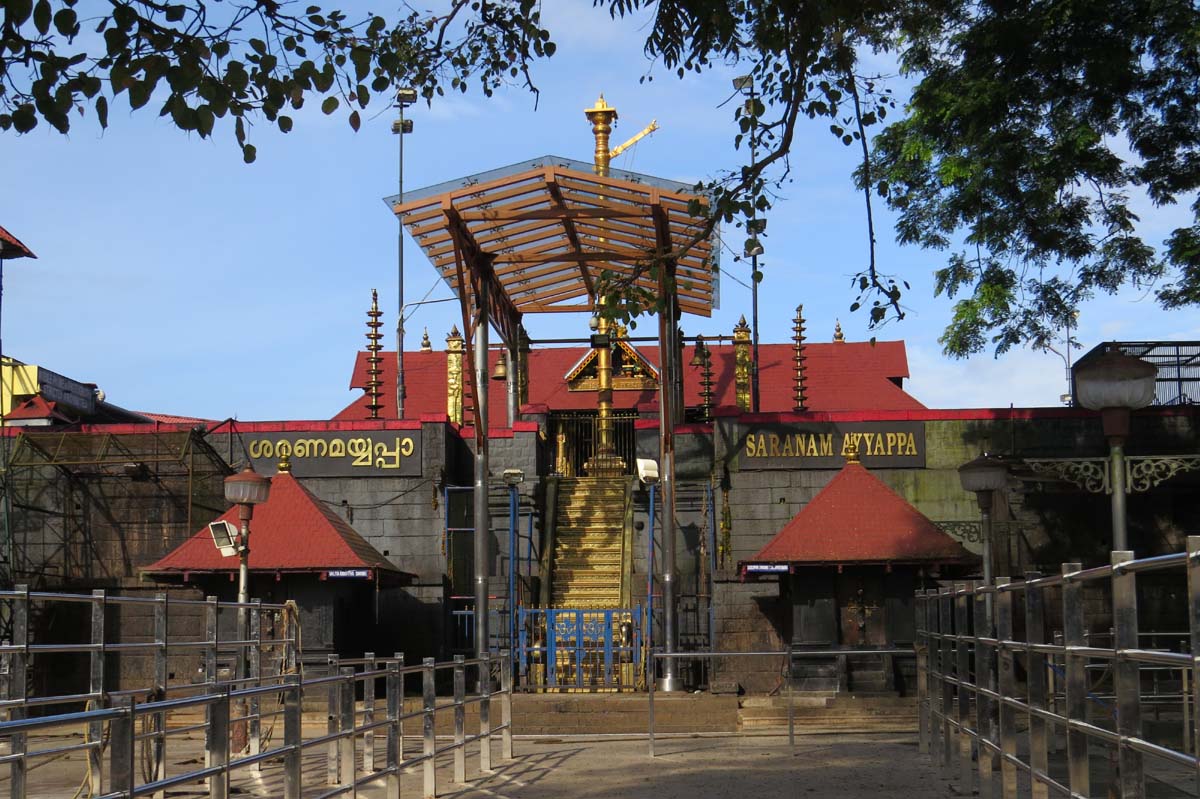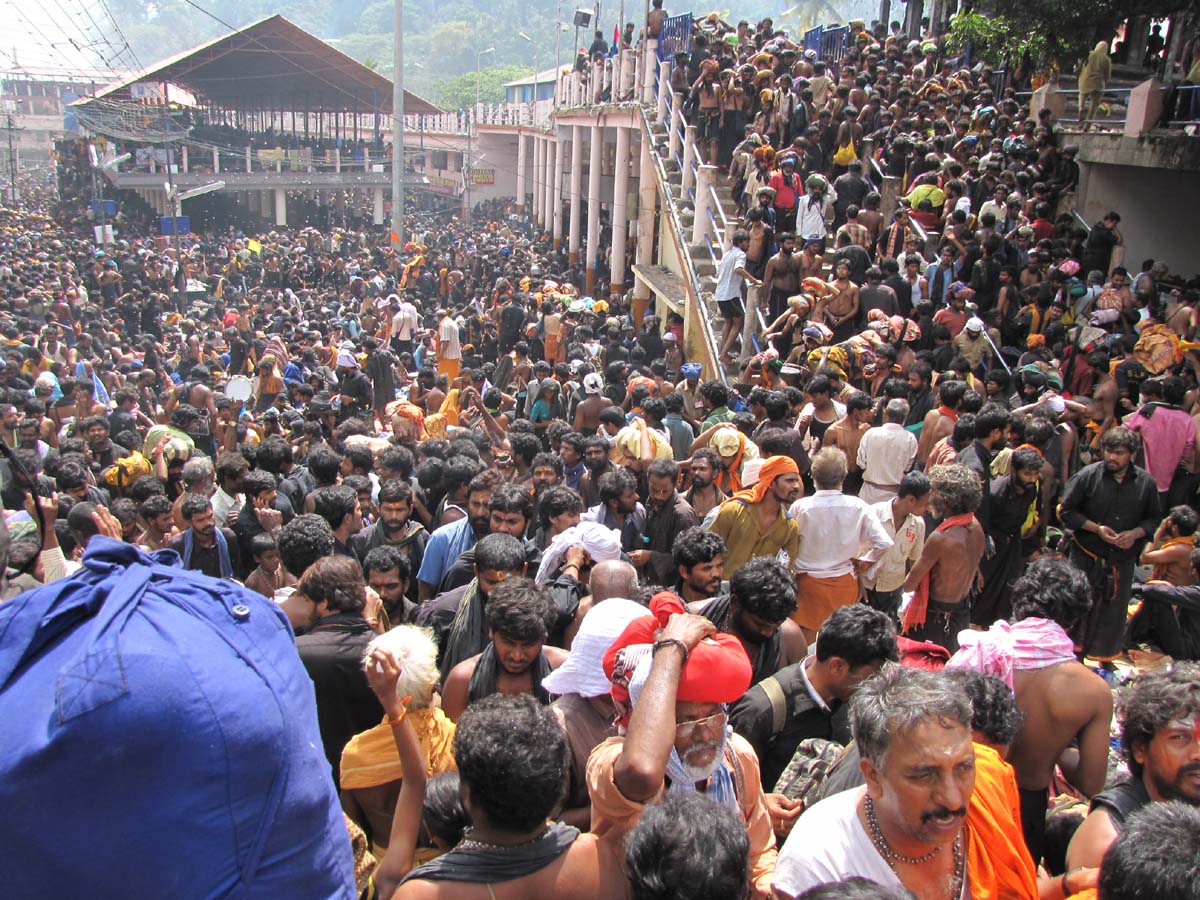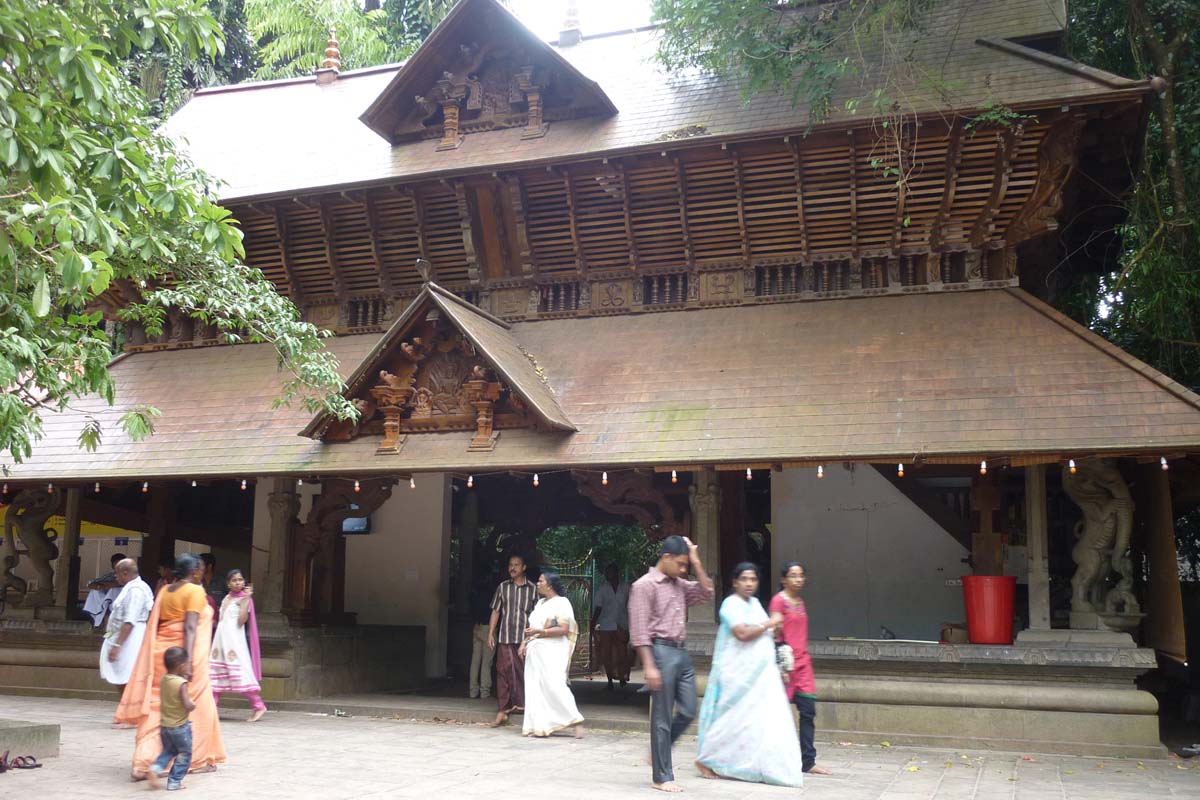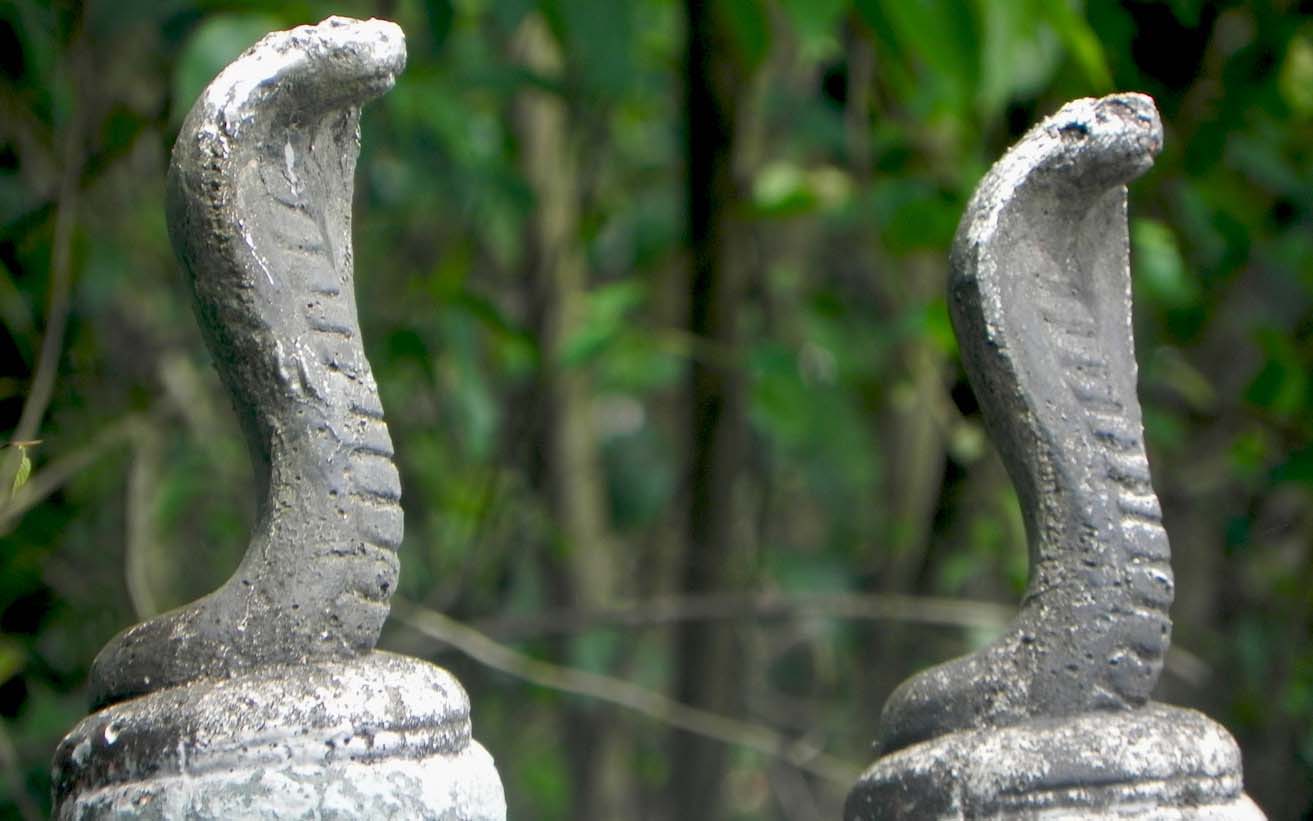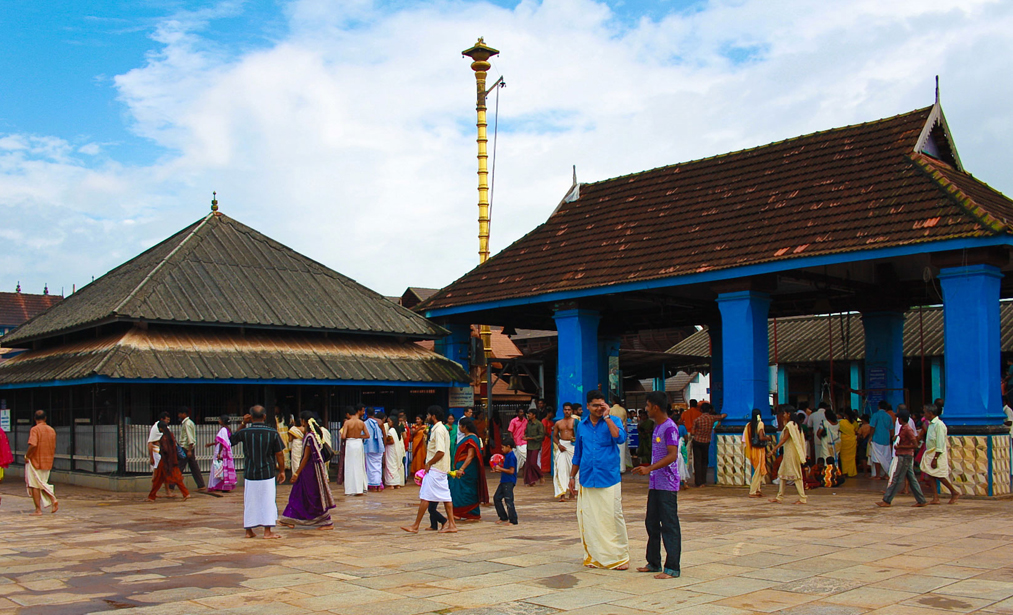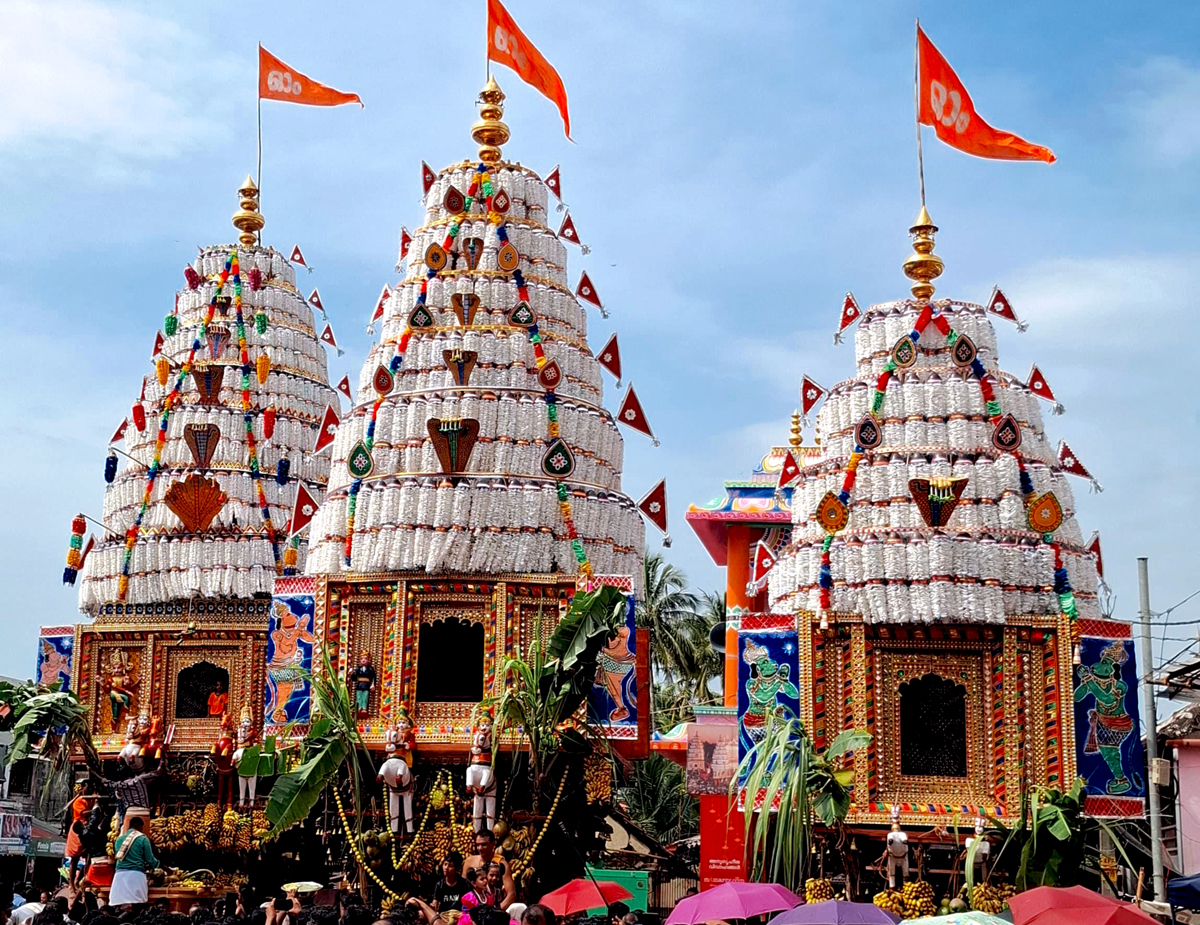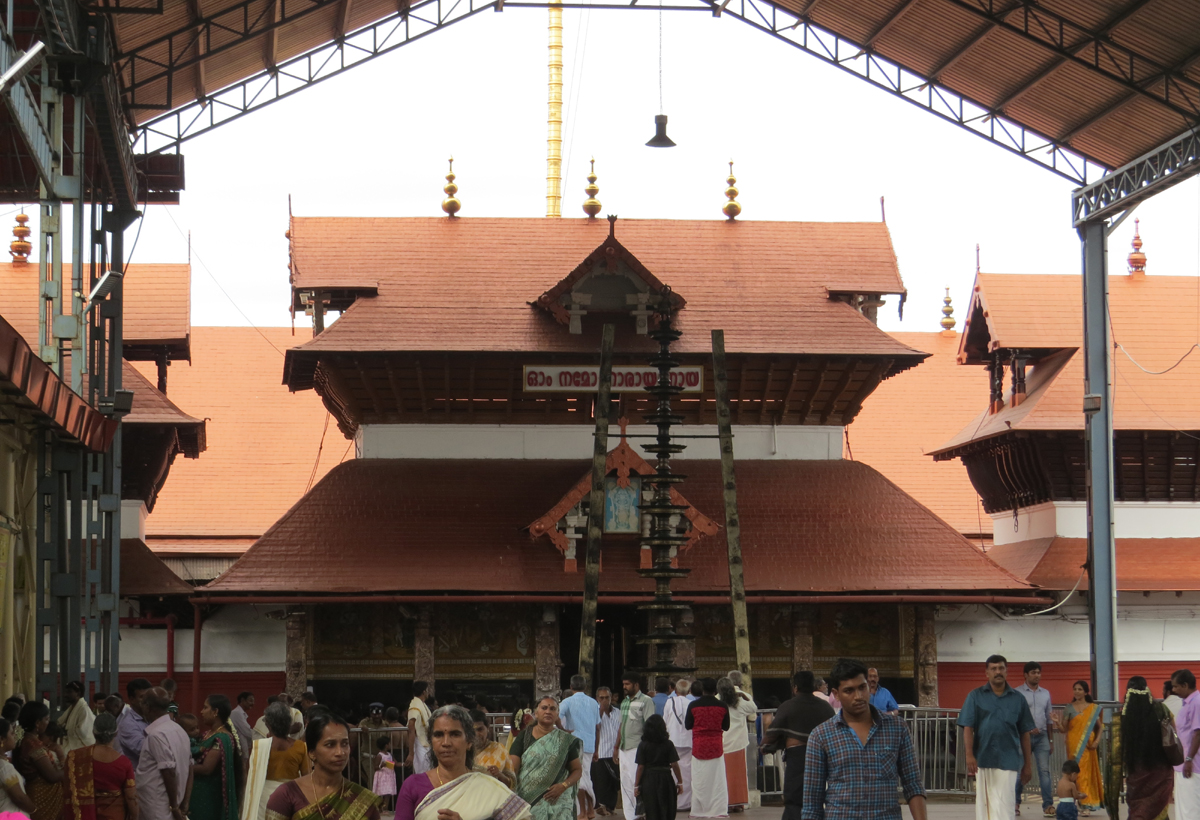Explore Kerala's Vibrant Traditions

Thrissur Pooram
Thrissur Pooram is a grand temple festival showcasing synchronized percussion ensembles, majestic elephant processions, and a vibrant cultural gathering. It reflects deep communal harmony and draws thousands to witness its dazzling spectacle of fireworks and traditional arts.
Learn More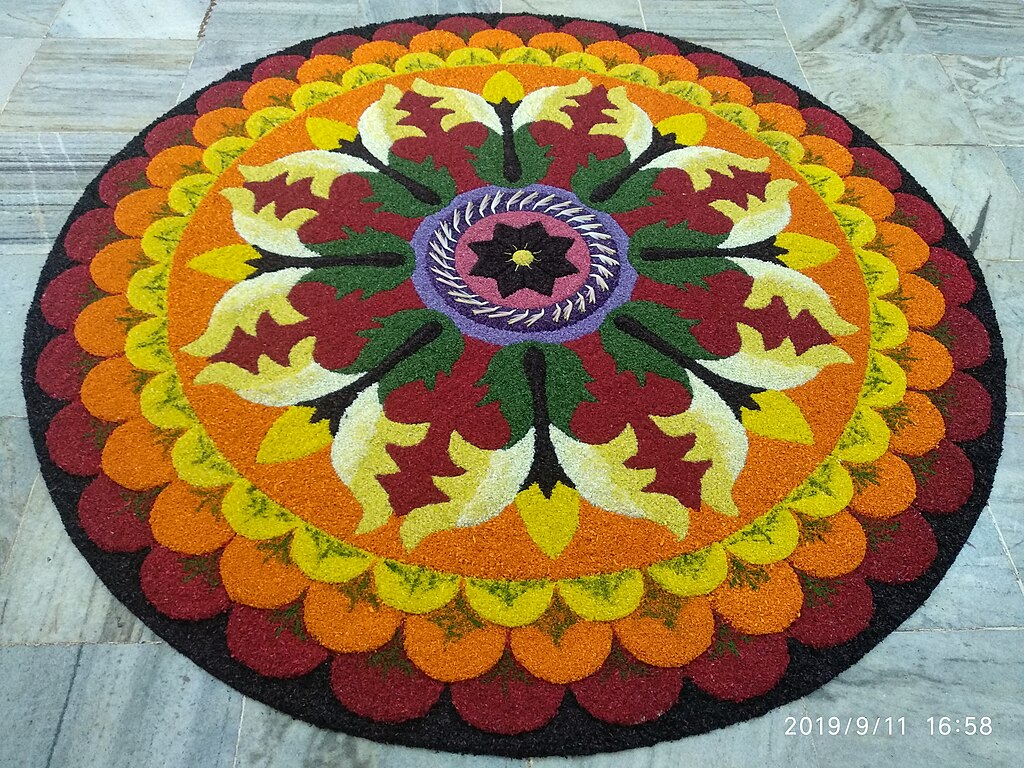
Onam
Onam is Kerala’s harvest festival, celebrating the legendary return of King Mahabali with ten days of vibrant festivities including elaborate floral designs (Pookkalam) and grand traditional feasts (Onasadya). It's a time for cultural performances, folk games, and strengthening social bonds across all communities in Kerala.
Learn More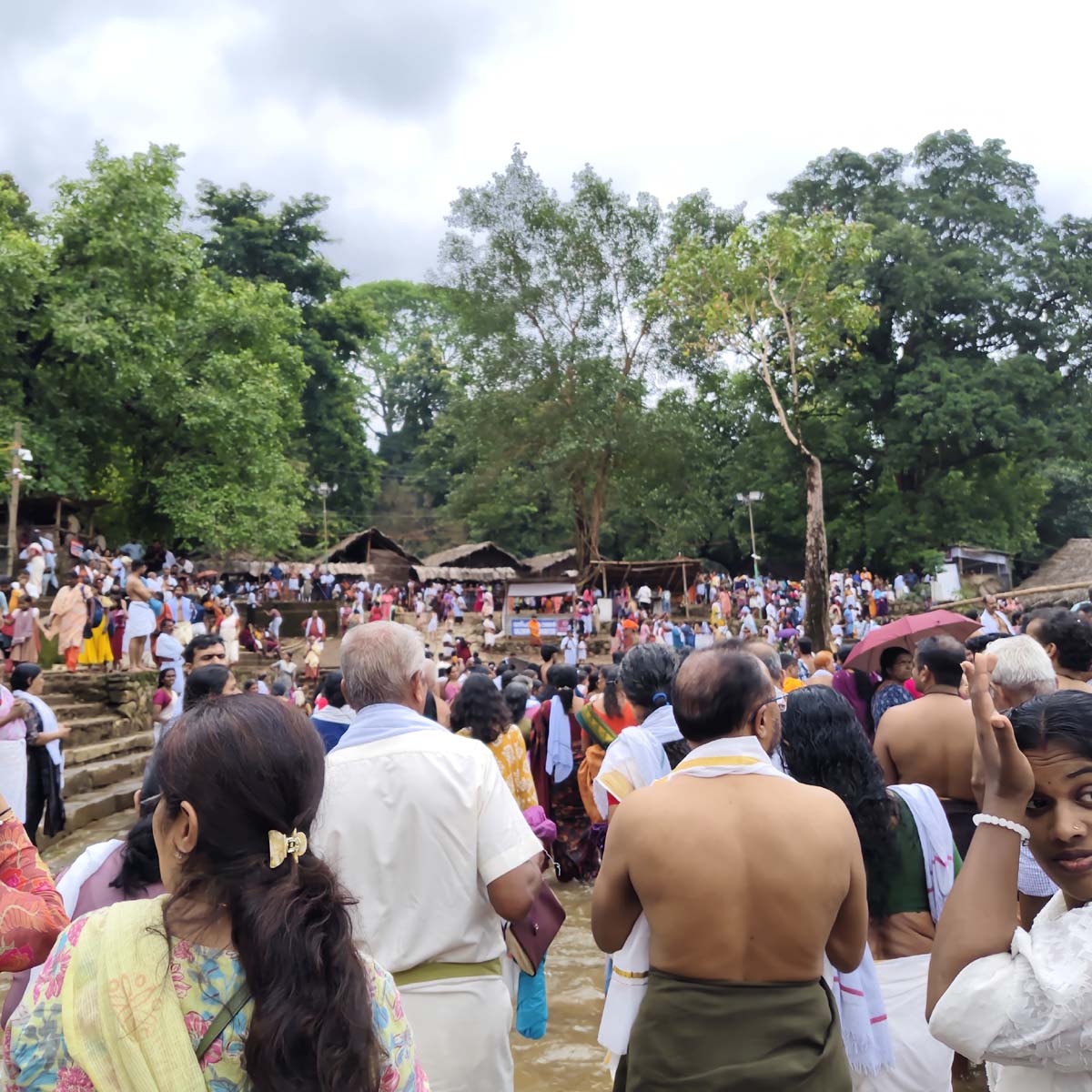
Kottiyur Vaishakha Mahotsavam
Kottiyoor Vaishakha Mahotsavam is a sacred pilgrimage and festival held annually in the forested region of North Kerala, where ancient rituals in reverence to Lord Shiva echo Vedic traditions. This unique celebration emphasizes spiritual austerity, nature worship, and significant tribal participation in its pristine natural surroundings.
Learn MoreKerala Kaleidoscope of Celebrations: An In-Depth Exploration of the Festivals of God’s Own Country
The Soul of Kerala: A Land Alive with Festivals
Kerala, often hailed as "God's Own Country," is a picturesque landscape of backwaters and lush greenery; also it is a land where ancient traditions breathe life into every corner.Kerala Tourism official website provides an overview of the state's cultural essence.1 This vibrant essence manifests most profoundly in its countless festivals.South Tourism highlights festivals as key to experiencing Kerala's cultural heritage.2 These celebrations are the pulsating heart of the state's cultural identity, reflecting its rich history, diverse faiths, and deep-rooted community spirit.ResearchGate article discusses the socio-cultural impacts of religious festivals in Kerala.3
From the grand spectacles of temple pageantry to the intimate gatherings of families, Kerala's festivals offer a unique window into a society where religious harmony and shared cultural practices intertwine seamlessly.Manyavar.com discusses Vishu as a celebration of new beginnings and unity.4 They stand as a testament to the state's inclusive spirit, where people of all faiths frequently come together to celebrate, transcending traditional boundaries and fostering a collective identity.Scribd document mentions Onam as a state festival observed by all citizens irrespective of creed.5 This article delves into the intricate tapestry of these celebrations, exploring their origins, rituals, and enduring significance.
A Living Calendar of Traditions
The festival calendar of Kerala is as diverse as its landscapes. Every month brings its own highlights — from harvest celebrations and temple rituals to vibrant art performances and boat races.Holidify lists popular festivals in Kerala throughout the year.6 Some festivals are steeped in mythology, others in agricultural cycles, and many are shaped by the blending of multiple cultural influences over centuries. Together, they form an unbroken chain of traditions that continue to evolve while keeping their ancient roots alive.Wikipedia's article on Culture of Kerala emphasizes the state's rich traditions.7 Among these, a few stand out for their grandeur, inclusiveness, and deep emotional connection to the people.
Onam: The Grand Harvest Homecoming
Onam stands as Kerala's most celebrated festival, a ten-day spectacle marking the annual homecoming of the mythical King Mahabali.Britannica describes Onam as a 10-day harvest festival and the state festival of Kerala.8 Legend describes Mahabali as a benevolent and just Asura (demon) king whose reign was characterized by unparalleled prosperity and equality, earning him the adoration of his people.Kerala Tourism details the story of Mahabali.9 The tale recounts how Lord Vishnu, in his Vamana avatar (a Brahmin dwarf), sought to test Mahabali's renowned generosity. Despite his guru's stern warning, Mahabali granted Vamana's request for land that could be covered in three steps.Hindu American Foundation explains the symbolism of Onam, King Mahabali, and the three steps.10 Vamana then grew to cosmic proportions, encompassing the entire earth and sky in his first two steps. For the third step, Mahabali, in an ultimate act of humility and devotion, humbly offered his own head. Pleased by this profound act of surrender, Vishnu blessed Mahabali with the right to visit his beloved subjects once a year, a visit that is joyously celebrated as Onam.Testbook provides details on the legend and significance of Onam.11 Read More.
Vishu: The Auspicious New Year Dawn
Vishu marks the Malayali New Year, falling on the first day of the Malayalam month of Medam (typically April 14th or 15th).Wikipedia's article on Vishu states it falls on the first day of Medam.12 The central ritual, and indeed the heart of the celebrations, is the Vishukkani ("that which is seen first"). This is a meticulously arranged display of auspicious items that is viewed upon waking up on Vishu day.Diwas.Manyavar.com explains Vishukkani as the most significant ritual.13 The belief is that this first sight of the new year will bring good luck and prosperity for the entire year ahead.Hindustan Times mentions the belief that the first sight on Vishu brings good luck.14 Read More
Thrissur Pooram: The Mother of All Poorams
Thrissur Pooram is arguably Kerala's most famous and spectacular temple festival, held annually at the Vadakkunnathan Temple in Thrissur Its origins trace back to 1796, when Sakthan Thampuran, the Maharaja of Cochin, initiated it with the explicit vision to unify various temples in the region and foster communal harmony.
Vallam Kali – The Boat Race of Kerala
Vallam Kali is a competitive boat race primarily held in the Alappuzha and Kollam districts of Kerala, where numerous lakes are located.The official Kerala Tourism website provides details on Vallam Kali locations.19 It can be considered a festival of Kerala, as people from all walks of life actively and energetically participate in and enjoy the event.Wikipedia's article on Vallam Kali describes it as a popular team sport and cultural event.20 Vallam Kali is the traditional boat race of Kerala, celebrated with great enthusiasm, especially during the Onam festival.Kerala Tourism Guide mentions Vallam Kali as a highlight of the Onam season.21 The term "Vallam" means boat, and "Kali" means game or race. These races are a blend of sport, culture, and tradition, attracting thousands of spectators from across the world.Holidify describes Vallam Kali as a blend of sport, culture, and tradition.22 Read More.
Attukal Pongala: The World's Largest Women's Gathering
Attukal Pongala is a truly unique temple festival celebrated at the Attukal Bhagavathy Temple in Thiruvananthapuram.Attukal.org is the official website of Attukal Bhagavathy Temple.23 It honors Goddess Attukal Devi, who is believed to be an incarnation of Kannaki, the legendary heroine from the Tamil epic Silappathikaram.Prepp.in links Attukal Pongala to Goddess Attukal Devi and Kannaki.24 The festival commemorates Kannaki's arrival at Attukal after the destruction of Madurai.Cultural India mentions the legend of Kannaki's arrival at Attukal.25
This festival holds the Guinness World Record for the largest gathering of women for a religious activity, with millions of women participating annually.Guinness World Records officially recognizes Attukal Pongala for the largest annual gathering of women.26 Read More.
Kodungallur Bharani
The Kodungallur Bharani festival, a vibrant and often intense celebration at the Kodungallur Bhagavathy Temple in Kerala, is a fascinating blend of myth, ritual, and fervent devotion. Central to this unique festival is the powerful presence of the Goddess Bhagavathy, believed to be an incarnation of Kannaki, and the distinctive tradition of Bharanippattu, the devotional songs that accompany the rituals. Read more.
Kottiyur Vaishakha Mahotsavam
The Kottiyur Vaishakha Mahotsavam, a sacred and ancient festival held annually in the serene hills of Kottiyur, Kerala, is a testament to the enduring power of faith and the rich tapestry of Hindu mythology.Kerala Tourism's website describes Kottiyoor Vaishakha Maholsavam as an ancient and sacred festival.29 This festival, steeped in legend and tradition, draws devotees from far and wide, seeking blessings and spiritual solace. It is a unique celebration, marked by its simplicity and deep connection to the natural world.Indian Panorama highlights the unique customs and naturalistic worship at Kottiyoor.30
Kottiyur Vaishakha Mahotsavam is one of the most revered and ancient pilgrimage festivals in Kerala, held annually at the Akkare and Ikkare Kottiyur temples in Kannur district. This 28-day long ritualistic event is deeply rooted in mythology and attracts thousands of devotees. It is known for its unique customs, including temporary shrines and naturalistic worship practices.Abhipedia provides details on the 28-day duration and unique customs of Kottiyoor Vaishakha Mahotsavam.31 Read more.
Sabarimala Makaravilakku: The Sacred Light of Lord Ayyappa
Sabarimala Makaravilakku is one of India's most revered pilgrimages, centered at the Sabarimala Temple, dedicated to Lord Ayyappa.Sabarimala official website confirms it as a major pilgrimage center for Lord Ayyappa.32 This sacred shrine is nestled in the dense forests of the Western Ghats. Devotees undertaking this pilgrimage observe a rigorous 41-day Mandala Vratham, an austerity period involving strict fasting and self-purification.Times of India mentions the 41-day Mandala Vratham observed by devotees.33 This demanding journey is considered a profound test of faith and endurance.
The festival marks the culmination of the annual pilgrimage season, attracting millions of devotees from across India.The News Minute discusses the millions of devotees attracted to Makaravilakku.34 On Makar Sankranti day (typically January 14th or 15th), devotees gather to witness the 'Makaravilakku' – a divine flame that appears thrice on the hilltop of Ponnambalamedu.DWS Jewellery describes Makaravilakku as a divine flame appearing on Ponnambalamedu.35 This flame is believed to symbolize the presence of Lord Ayyappa and is often associated with the celestial star 'Makara Jyothi'.Wikipedia's Makaravilakku article connects the flame with Makara Jyothi.36
A notable aspect of Makaravilakku is the public discussion surrounding its origins. While traditionally revered as a miraculous divine manifestation, it was clarified in 2011 by the Travancore Devaswom Board and the Pandalam Palace that the Makaravilakku light is "man-lit" by officials and local tribes as part of a long-standing ritual.The Hindu reported the clarification regarding Makaravilakku being man-lit.37 Despite this clarification, the pilgrimage continues to attract millions, and the devout still consider the appearance of the Makara star on the same auspicious day as a significant sign. This phenomenon highlights a complex interplay between faith, tradition, and modern rationalism. For many devotees, the spiritual meaning derived from the collective experience and the symbolic presence of the deity, as marked by the Makara star, transcends the literal, empirical origin of the flame. This demonstrates a cultural capacity to hold seemingly contradictory beliefs, prioritizing spiritual fulfillment and communal bonding over a purely scientific explanation.The News Minute discusses the interplay of faith and rationalism concerning Makaravilakku.38
The pilgrimage during Makaravilakku is a time for deep spiritual renewal, self-discipline, and seeking blessings from Lord Ayyappa. It fosters a strong sense of communal identity, with local communities uniting in preparation for the festival, ensuring collective management of pilgrim transportation and traditional food preparation. The festival is celebrated on Makar Sankranti day, typically falling on January 14th or 15th, in the Malayalam month of Makaram.Amoghavarsha IAS Academy notes Makaravilakku's celebration on Makar Sankranti day in Makaram month.39
Mannarasala Ayilyam: A Celebration of Divine Serpent Energy
Mannarasala Ayilyam is a revered festival celebrated in the heart of Kerala, marking one of the most auspicious days in the traditional Malayalam calendar.Kerala Tourism guide describes Mannarasala Ayilyam as a significant festival for serpent worship.42 Dedicated to the worship of serpent deities, this festival symbolizes fertility, protection, and the cosmic balance between nature and mankind.Wikipedia's article on Mannarasala Sree Nagaraja Temple highlights the focus on serpent deities and their significance.43
Historical and Mythological Background
Rooted in rich mythology and ancient lore, Mannarasala Ayilyam is believed to harness celestial energies that align the heavens with the earth. According to local legends, ancient sages once performed severe penances to appease the powerful serpent gods, ensuring harmony and balance in nature. These deities, often revered as guardians of life and nature, are said to bestow blessings of prosperity and well-being on those who honor them.Dharma Karma explores the mythological origins and legends of serpent worship.44
Rituals and Celebrations
The festival is marked by a series of time-honored rituals. Devotees observe fasting, recite sacred prayers, and light lamps to invoke the benevolent presence of the serpent deities. Offerings of fruits, flowers, and traditional sweets are presented at sacred groves and temples, where it is believed that the divine energy is most concentrated.Hinduism Today describes offerings and rituals performed during serpent worship festivals.45
A key feature of Mannarasala Ayilyam is the symbolic representation of serpents through artistic displays and processions. These representations serve as a reminder of the ancient wisdom that venerates nature’s life-giving forces. The rhythmic chants and devotional songs, unique to the festival, create an atmosphere of intense spirituality and collective devotion.India Heritage explains the artistic and symbolic representations of serpents in rituals.46
Spiritual Significance
Beyond its elaborate rituals, Mannarasala Ayilyam is a profound spiritual journey. The festival emphasizes the importance of balance and harmony between humans and the natural world. By venerating the serpent deities, devotees seek protection from negative influences and invite blessings that promote fertility, growth, and abundance. This day of observance encourages introspection and a reconnection with the timeless cycles of nature.Speaking Tree discusses the spiritual significance of serpent worship for harmony and protection.47
Cultural Impact
Mannarasshala Ayilyam has grown into a symbol of cultural identity and communal unity in Kerala. It reinforces traditional beliefs and fosters a deep sense of belonging among the people. The oral traditions and folklore associated with the festival enrich its narrative, ensuring that the ancient wisdom and cultural heritage of the region continue to thrive in modern times.Kerala Culture discusses the cultural impact of traditional festivals in fostering identity.48
In essence, Mannarasshala Ayilyam is more than a ritualistic celebration; it is a vibrant expression of divine energy and a testament to the enduring power of faith. By merging myth with practice, the festival invites devotees to reconnect with nature and embrace the spiritual legacy that has defined Kerala for centuries.
Chottanikkara Makam: A Divine Auspicious Celebration
Chottanikkara Makam is one of the most auspicious annual observances at the famed Chottanikkara Bhagavathy Temple in Kerala.The official Chottanikkara Temple website details the significance of Makam.49 On this day, the temple transforms into a sacred space of healing and divine grace, attracting thousands of devotees who believe in the Goddess’s compassionate power. The festival is especially associated with the Makam nakshatra (lunar star) and is revered as a time of transformation, renewal, and blessings.
Legend and Rituals
Temple legends describe the Goddess’s miraculous powers to heal ailments, both physical and spiritual. On Makam, devotees witness elaborate rituals, including deeparadhana (lamp worship), ceremonial processions, and bhajans in praise of the Goddess.TemplePurohit describes the legends and healing powers associated with Chottanikkara Devi.50 Women, in particular, participate in large numbers, offering prayers for family well-being and freedom from hardships.
Rituals also include cleansing ceremonies, where devotees seek release from negative energies. The chants and hymns sung throughout the day amplify the sanctity of the temple, reinforcing the belief that the Goddess protects her devotees with boundless compassion.Daily Excelsior highlights the spiritual cleansing aspects of temple rituals.51
Spiritual Significance
The observance of Chottanikkara Makam is more than ritual—it is a spiritual experience. It symbolizes the inner journey of surrendering to the divine, where faith is seen as a healing force. Devotees believe that participating in the Makam rituals removes obstacles, restores harmony, and fills life with renewed hope.Drik Panchang notes the spiritual benefits of observing Makam at Chottanikkara.52
For many, the festival also represents the triumph of faith over despair. It reaffirms the belief that sincere devotion can overcome life’s challenges and bring spiritual upliftment.speakingtree.in emphasizes faith and devotion as key to overcoming challenges.53
Cultural and Community Impact
The festival plays a vital role in uniting the community. Families, neighbors, and cultural groups come together at the temple to celebrate Kerala’s spiritual heritage. Cultural programs, devotional music, and group rituals foster bonds of solidarity while keeping alive centuries-old traditions.Kerala Culture discusses how temple festivals foster community unity.54
In essence, Chottanikkara Makam is a celebration of faith, healing, and togetherness. It exemplifies the temple’s enduring role as a place of hope and a cultural landmark where myth, devotion, and community life converge.
Chettikulangara Kumbha Bharani – Festival of Grand Kettukazhcha and Devotion
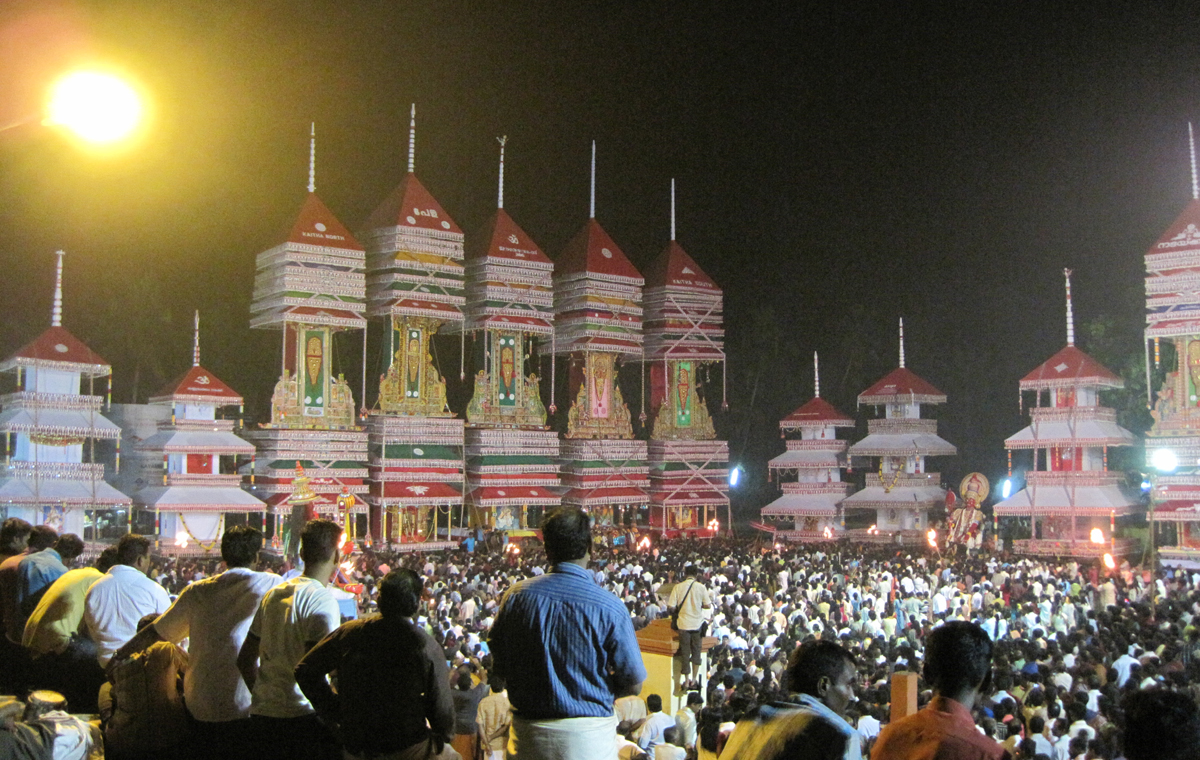
Chettikulangara Bharani Kettu Kazhcha
Credit: Hellblazzer at English Wikipedia, CC BY-SA 3.0, via Wikimedia Commons
Chettikulangara Kumbha Bharani, celebrated in the Malayalam month of Kumbham (February–March), is among the most spectacular temple festivals in Kerala. Held at the historic Chettikulangara Devi Temple in Alappuzha district, it coincides with the Bharani star and is dedicated to Goddess Bhagavathy.The official Chettikulangara Devi Temple website provides details about the festival.55 The festival is an extraordinary blend of devotion, folk artistry, and communal participation.Kerala Tourism mentions Chettikulangara Kumbha Bharani's timing and dedication to Bhagavathy.56
Magnificent Kettukazhcha – The Heart of the Festival
The highlight of the festival is the breathtaking Kettukazhcha, where local village units (karas) bring gigantic, hand-crafted effigies to the temple grounds. These include:
- Kuthiras – massive wooden horse effigies
- Therus – towering temple chariots
- Annan Kuthiras – swan-shaped structures
Some structures rise over 70 feet, showcasing the mastery of traditional carpentry, painting, and folk artistry.Wikipedia's Chettikulangara Kumbha Bharani article describes Kettukazhcha and its effigies.57
Rituals and Traditions
Another distinctive ritual is Kuthiyottam, performed by young boys who undergo days of disciplined training and symbolic rituals. This act, considered a symbolic re-enactment of ancient sacrificial traditions, underscores devotion through self-control and endurance.Kerala.me describes Kuthiyottam as a symbolic ritual performed by young boys.58
Cultural and Tourism Importance
Today, Chettikulangara Kumbha Bharani attracts thousands of devotees, art enthusiasts, and international tourists.Traveler.com notes the festival's attraction for tourists and devotees.59 With its giant effigies, music, and devotion-filled atmosphere, the festival represents Kerala’s living folk culture at its grandest. It remains a symbol of unity, artistry, and shared belief.The Hindu highlights Chettikulangara Kumbha Bharani as a blend of devotion, art, and community.60
Kalpathi Ratholsavam
Kalpathi Ratholsavam is a centuries-old chariot festival celebrated in the heritage village of Kalpathi, Palakkad.Kerala Tourism's official website describes Kalpathi Ratholsavam as a famous chariot festival.61 Dedicated to Lord Shiva at the Sree Viswanatha Swamy Temple, this event is often referred to as the “South Indian Kashi” because of its deep religious and cultural influence.Wikipedia's article on Kalpathi Ratholsavam confirms its dedication to Lord Shiva.62
Historical Significance
With a history of more than 700 years, Kalpathi Ratholsavam is closely tied to Tamil Brahmin traditions, as Kalpathi has been a Tamil settlement for centuries.Mathrubhumi News highlights the 700-year history and Tamil Brahmin influence.63 Its rituals, chants, and practices reflect influences from Tamil Nadu’s temple culture.The Hindu notes the strong Tamil Nadu influence on Kalpathi's temple traditions.64
Festival Highlights
Celebrated over ten days, the festival features Vedic recitations, classical music concerts, and religious rituals. The central attraction is the pulling of elaborately decorated wooden chariots by throngs of devotees, symbolizing collective devotion and cultural pride.
Chariot Procession
The grand chariot procession takes place during the last three days, with the main chariot carrying Lord Viswanatha (Shiva), followed by smaller chariots of deities.The Times of India describes the chariot procession with the main chariot of Lord Viswanatha.
Guruvayur Ekadashi is one of the most revered observances at the Guruvayur Temple in Kerala, celebrated with immense devotion and spiritual fervor.The official Guruvayur Temple website provides details on Guruvayur Ekadashi.73 This auspicious day is marked by rigorous fasting, elaborate rituals, and special prayers dedicated to Lord Guruvayurappan, a form of Lord Krishna. Devotees believe that observing Ekadashi with sincerity brings divine blessings and prosperity.ISKCON Bangalore highlights the spiritual benefits of observing Ekadashi.74
The origins of Guruvayur Ekadashi are deeply rooted in ancient Hindu scriptures and temple lore. According to tradition, the day holds immense spiritual power as it is believed to be when the divine energies are at their peak. Devotees consider it a day for cleansing the mind and body, and a time to renew one’s spiritual commitment. The fasting and prayer rituals are seen as a way to express gratitude and to seek forgiveness for past transgressions.Hinduism Today discusses the spiritual significance of Ekadashi fasting and prayers.75
On this sacred day, devotees observe a strict fast and engage in a variety of rituals that are unique to the Guruvayur Temple. The day begins with an early morning bath and the chanting of Vedic hymns. Special offerings such as fruits, sweets, and flowers are made to Lord Guruvayurappan. The temple is adorned with vibrant decorations, and the atmosphere is filled with melodious chants and devotional music.The Guruvayur Devaswom provides information on rituals and offerings during Ekadashi.76
In addition, priests perform intricate rituals that include the ceremonial reading of sacred texts. The recitation of the Vishnu Sahasranamam and other hymns underscores the importance of divine virtues and the promise of spiritual renewal.Speaking Tree mentions the importance of Vishnu Sahasranamam in Ekadashi observances.77
Guruvayur Ekadashi is also a time for communal harmony. Devotees from all walks of life come together to celebrate the day, reinforcing their bonds of faith and community. The collective observance of rituals and the sharing of spiritual experiences create an atmosphere of unity and devotion.The Times of India highlights the communal harmony seen during temple festivals.78
Many believe that the divine presence of Lord Guruvayurappan on Ekadashi brings about personal transformation and the fulfillment of wishes. The day serves as a reminder of the eternal power of faith and the benevolence of the divine.Dharma Karma explores beliefs about divine blessings and wish fulfillment.79
Guruvayur Ekadashi stands as a testament to the enduring power of devotion and the rich cultural heritage of Kerala. It is a day when the boundaries between the earthly and the divine blur, offering devotees a profound experience of spiritual awakening and communal joy. Observing this sacred day is believed to bestow blessings, purify the soul, and renew the commitment to a life of righteousness.
Guruvayur Ekadashi: A Divine Celebration of Abundance
Historical and Spiritual Significance
Rituals and Observances
Devotional Impact and Community Spirit
Christmas
The birth of Christ is celebrated with immense gaiety across Kerala, transforming churches and Christian households into festive hubs from the third week of December.Kerala Tourism's article on Christian festivals mentions Christmas celebrations.80
- Traditions: Carol groups enthusiastically visit homes, often extending their visits to neighbors irrespective of their religious affiliations. Stars and decorative lights adorn homes and public spaces, and manger scenes depicting the Nativity are common.
- Unique Kerala Elements: Kerala boasts its own delightful version of Santa Claus, known as the "Christmas Appooppan" or "Christmas Father," who often accompanies carol groups. The state is also renowned for its unique plum cakes, a festive delicacy made with dry fruits soaked in various alcohols, often with family-specific recipes passed down through generations. Midnight Mass is a profoundly significant event, characterized by its cultural richness, fervent religious devotion, and a strong sense of togetherness.Travel at 60 highlights unique Kerala Christmas traditions like Christmas Appooppan and plum cakes.81
- Timing: Christmas is celebrated on December 25th, with preparations typically commencing from the third week of December.Wikipedia confirms Christmas date and general preparation period.82
Easter
Easter, marking the resurrection of Christ, falls at the conclusion of a 40-day Lenten period of fasting and penance, during which many households abstain from meat, fish, and alcohol.CNEWA describes the Lenten period and its observances before Easter.83
- Traditions: Holy Week, leading up to Easter, includes significant observances such as Maundy Thursday, commemorating the Last Supper and Jesus' washing of the disciples' feet; Good Friday, a solemn day of grief and penance marking Christ's crucifixion; and Holy Saturday, a day of mourning and wailing. Easter Sunday is a joyous occasion of feasting and rejoicing, often beginning with a vigil and midnight liturgy that celebrates the discovery of Jesus' resurrection.Brittanica provides an overview of Holy Week and Easter traditions.84
- Unique Kerala Elements: A distinctive tradition in Kerala is the baking of Passover bread made from rice and coconut in every Christian home on Holy Thursday. Additionally, some Oriental Orthodox churches feature vibrant processions around the church accompanied by firecrackers during their Easter liturgy, adding a local flair to the universal Christian observance.Kerala Window highlights unique Kerala Christian Easter traditions.85
- Timing: The date of Easter varies annually, typically falling between March 22nd and April 25th.Christianity.com explains the variable date of Easter.86
Church Feasts (Perunnals)
Numerous local church feasts, known as Perunnals, are celebrated throughout the year across Kerala.Kerala Tourism's website mentions Perunnals as local church feasts throughout the year.87 These feasts are dedicated to specific saints or commemorate church anniversaries and are characterized by enthusiastic community participation, often including people of other religions.Kerala.me discusses the community participation in Christian festivals.88 The enthusiastic participation of "people of other religions" in Christian Perunnals, often featuring elements like elephant processions and percussion traditionally associated with Hindu temple festivals, demonstrates a profound level of cultural syncretism unique to Kerala. This signifies that these church feasts are not just religious observances but deeply embedded community events, where cultural expression and shared local identity frequently override strict religious boundaries. This cultural blending is a defining characteristic of Kerala's "God's Own Country" ethos, where religious harmony is not just an ideal but a lived reality, expressed through shared festive traditions.The Hindu emphasizes the unique cultural syncretism in Kerala's festivals.89
- Common Elements: Perunnals typically feature grand processions bearing idols of saints, adorned with flags, decorated umbrellas, crosses, and even elephants, accompanied by vibrant musical instruments. Dazzling fireworks and elaborate feasts are common highlights, drawing large crowds.Kerala Tourism's "Feasts or Perunnal in Kerala Churches" details common elements.90
Kuruthola Perunnal: The Palm Frond Festival of Devotion and Tradition
Kuruthola Perunnal is a significant Christian festival observed in Kerala, commemorating Jesus Christ’s triumphant entry into Jerusalem.Kerala Tourism's section on Christian festivals mentions Palm Sunday.91 Celebrated as part of Palm Sunday, this festival derives its name from kuruthola, meaning palm fronds, which play a central role in the rituals. The festival marks the beginning of the Holy Week and is deeply rooted in biblical traditions, symbolizing faith, humility, and devotion.The Indian Express details the meaning of Kuruthola and its significance.92
The Biblical Significance
Palm Sunday, known as Kuruthola Perunnal in Kerala, is based on the event when Jesus rode into Jerusalem on a donkey, fulfilling the prophecy of the Messiah’s arrival. The people welcomed Him by spreading palm leaves on the path and chanting "Hosanna." This act symbolized their recognition of Jesus as the savior and king, while also foreshadowing His imminent suffering and crucifixion.Bible Gateway provides biblical accounts of Jesus' entry into Jerusalem.93
Rituals and Traditions
Kuruthola Perunnal is observed with great reverence in churches across Kerala, blending biblical traditions with local cultural elements.
- Blessing and Distribution of Palm Fronds: One of the most significant rituals is the blessing of palm fronds, which are then distributed among the faithful. The priest, dressed in ceremonial vestments, blesses the leaves with holy water and incense, symbolizing purification and divine grace. Devotees carry these fronds during the church procession, reenacting the biblical event.Vatican News describes the blessing and distribution of palms on Palm Sunday.94
- The Solemn Procession: A grand procession is an integral part of the celebration. Devotees carry the blessed palm fronds while singing hymns and prayers. Many churches organize reenactments of Jesus’s entry into Jerusalem, with a priest or a child riding a donkey to symbolize humility and peace.Catholic News Agency highlights the procession and reenactments on Palm Sunday.95
- Symbolism of the Palm Fronds: The palm leaves blessed during Kuruthola Perunnal are often kept in homes as symbols of divine protection and blessings. In some regions, these leaves are later burned, and the ashes are used for Ash Wednesday in the following year, signifying the cyclical nature of faith and repentance.Catholic Online explains the symbolism and subsequent use of blessed palms.96
The Spiritual and Cultural Impact
Kuruthola Perunnal is more than just a religious observance; it fosters a deep sense of community and faith among Kerala’s Christian population. The festival serves as a reminder of Jesus’s teachings
Arthunkal Perunnal: The Feast of St. Sebastian

Arthunkal Perunnal, one of the most prominent Kerala church festivals, is celebrated at St. Andrew's Forane Church in Arthunkal, Alappuzha. Also known as the Feast of St. Sebastian, this 11-day festival culminates on January 20th and attracts tens of thousands of pilgrims from across Kerala and neighboring states. Devotees gather to honor St. Sebastian, who is revered as a powerful protector against epidemics and hardships.Kerala Tourism provides information on Arthunkal Perunnal and its date.98
The highlight of the festival is the grand procession carrying the statue of St. Sebastian. Pilgrims offer silver replicas of arrows, symbolizing the saint’s martyrdom, as part of their vows. Traditional prayers, hymns, and the sound of church bells create a deeply spiritual environment, making Arthunkal a major Christian pilgrimage in Kerala.
Arthunkal Perunnal is not just a religious event but also a cultural gathering that reflects Kerala’s communal harmony. People of all faiths participate in the feast, showcasing the state’s inclusive heritage. Local fairs, food stalls, and art performances enrich the celebration, giving visitors a glimpse of Kerala’s unique blend of devotion and cultural life.
Edathua Perunnal: The Feast of St. George
Edathua Perunnal, the Feast of St. George, is a famous Christian festival in Kerala celebrated at St. George’s Church in Edathua, Alappuzha. The 11-day festival, held in the Malayalam month of Medam (April–May), honors St. George, who is venerated as a saint of protection, courage, and healing. Pilgrims believe that prayers at this church bring relief from ailments and blessings of prosperity.Kerala Tourism's website mentions Edathua Perunnal's timing and festivities.99
The highlight is the magnificent procession featuring the golden statue of St. George. Carried on a decorated chariot and accompanied by ceremonial umbrellas, chenda melam (traditional percussion), and colorful parasols, the procession attracts believers from across South India. Many pilgrims walk barefoot as an act of devotion, reinforcing the spirit of this Kerala church feast.
Apart from the rituals, Edathua becomes a hub of cultural and social interaction during the feast. The church and surrounding areas are lit with thousands of oil lamps, creating a breathtaking sight. Food fairs and handicraft stalls add to the festive charm, making the Edathua Perunnal both a spiritual and cultural experience.
Malayattoor Perunnal
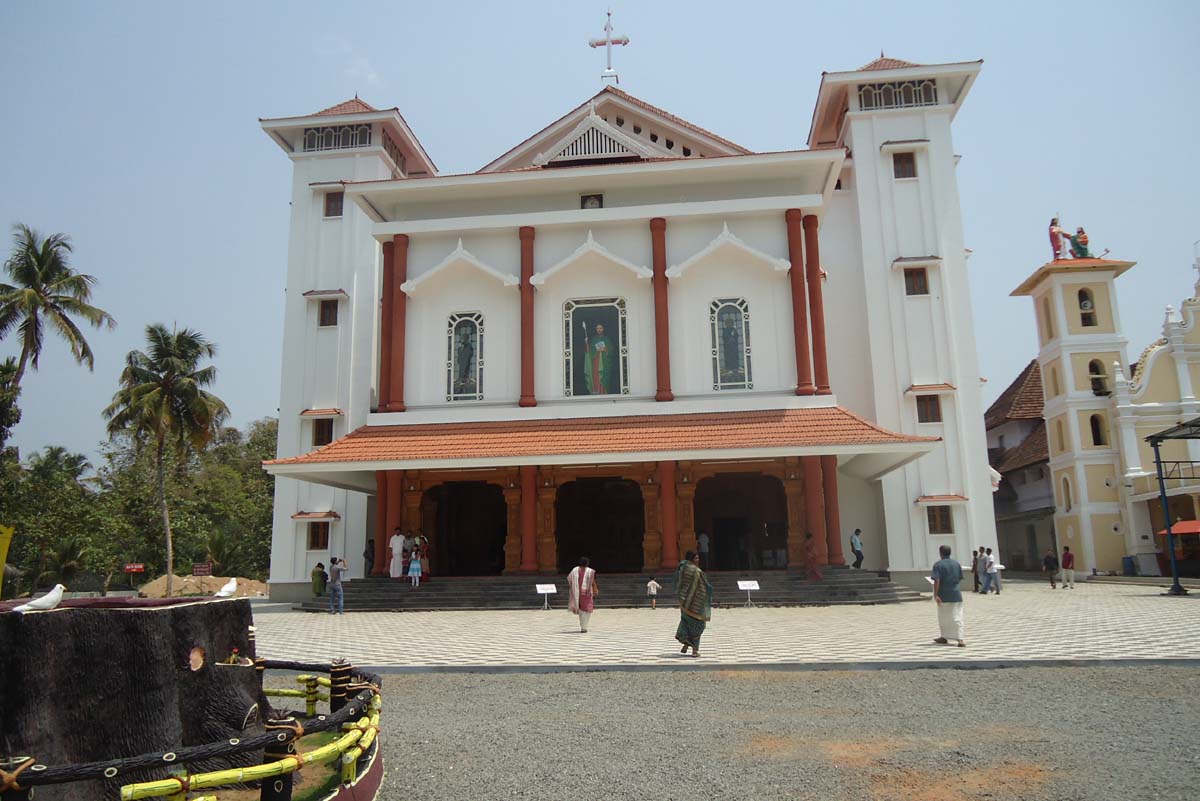
Malayattoor Perunnal is among the most significant Christian pilgrimages in Kerala, held at the historic St. Thomas shrine on Malayattoor Hills in Ernakulam. Celebrated on the Sunday after Easter, it commemorates the apostolic visit of St. Thomas, who is believed to have prayed at this sacred hilltop during his mission in India.Malayattoor Church official website confirms the pilgrimage and its date.100
The pilgrimage is unique, as thousands of devotees climb the hill barefoot, carrying wooden crosses as an expression of penance and devotion. The ascent is accompanied by chanting of prayers and hymns, symbolizing both sacrifice and faith. The church at the summit becomes the spiritual heart of the festival, welcoming pilgrims from different regions.
Malayattoor Perunnal reflects Kerala’s deep-rooted Christian traditions while also highlighting the state’s heritage of inter-religious harmony. Surrounded by scenic beauty, the pilgrimage offers not only a spiritual journey but also a peaceful retreat for prayer and reflection. It is one of the most visited Catholic pilgrimages in Kerala.
Kallooppara Perunal
Kallooppara Perunal is a historic church feast in Kerala celebrated annually on January 15th at St. Mary’s Church, Kallooppara, Pathanamthitta. The festival has been observed for centuries and continues to draw the faithful in large numbers. It is both a spiritual occasion and a community event, marking an important date in the Christian calendar of Kerala.Kerala Tourism's "Church Festivals in Kerala" lists Kallooppara Perunal.101
Special masses, novenas, and processions are the key highlights of the festival. The statue of the Virgin Mary is taken out in a grand procession, accompanied by hymns, candles, and prayers. Families gather to attend the services, and many take part in offering traditional vows and prayers.
Beyond worship, the festival is a time for strengthening community ties. Decorated streets, local fairs, and cultural performances bring the village to life. Kallooppara Perunal is a fine example of how Kerala Christian festivals combine devotion with cultural celebration.
Koratty Muthy Feast
The Koratty Muthy Feast, held in the second week of October, is one of the most popular Marian feasts in Kerala. Celebrated at St. Mary’s Church in Koratty, Thrissur, it is dedicated to Mother Mary, lovingly known as Koratty Muthy. Pilgrims arrive in large numbers to seek blessings for health, family, and prosperity.Koratty Muthy official website provides the feast timing.102
The feast is marked by a colorful procession in honor of the Virgin Mary, enriched with floral decorations, devotional songs, and traditional Kerala art forms. The church and surrounding areas become vibrant with music, lights, and prayers, creating an atmosphere of joy and devotion.
In addition to worship, Koratty Muthy Feast is known for its fairs, food stalls, and charitable works. It is both a sacred and social gathering, reflecting Kerala’s tradition of combining spirituality with cultural expression. This makes it a major highlight of Christian festivals in Kerala.
Manjinikkara Church Festival
The Manjinikkara Church Festival, popularly known as Orma Perunal, is one of the most important Christian pilgrimages in Kerala. Celebrated in February at the Manjinikkara Dayara in Pathanamthitta, it commemorates the death anniversary of Mar Ignatius Elias III, the Patriarch of Antioch, who passed away here in 1932.Manjinikkara Dayara official website details the Orma Perunal.103
The relics of Mar Ignatius Elias III are preserved at the monastery, and thousands of devotees gather annually to honor his memory. Special masses, liturgical services, and solemn processions form the core of the celebrations. Many pilgrims walk long distances to reach the shrine, demonstrating their faith and devotion.
Manjinikkara Perunal is not only a religious event but also a cultural occasion that unites people across regions. It highlights the heritage of the Syrian Christian community in Kerala while welcoming people of all faiths. This blend of devotion and social harmony makes it a remarkable Kerala church festival.
Muslim Festivals: Expressions of Devotion and Brotherhood
Kerala's Muslim community celebrates major Islamic festivals with distinct local flavors, often incorporating elements reminiscent of regional traditions.Kerala Window highlights the blend of Islamic and local traditions in Kerala's Muslim festivals.104 This further highlights the state's remarkable cultural fusion.
Eid ul-Fitr
Eid ul-Fitr, meaning "festival of breaking the fast," is one of the most joyous and significant celebrations in the Islamic calendar.Wikipedia's Eid al-Fitr article defines the festival's name.105 It marks the culmination of Ramadan, the holy month of fasting,Britannica explains Eid ul-Fitr as marking the end of Ramadan.106 and is a time of immense gratitude, celebration, and community spirit.FreePixel Blog describes Eid ul-Fitr as a time for gratitude and community.107 It is a period where Muslims worldwide express their thankfulness to Allah for the strength and guidance provided during Ramadan, and celebrate the spiritual renewal achieved.Times of India discusses the spiritual significance of Eid ul-Fitr.108
The Significance of Eid ul-Fitr
- End of Ramadan: Eid ul-Fitr signifies the completion of a month of rigorous self-discipline, spiritual reflection, and increased devotion. It is a moment to rejoice in the successful fulfillment of the fast.
- Expression of Gratitude: The festival is a time to express profound gratitude to Allah for the blessings of Ramadan and the ability to observe the fast.Islamic Relief Worldwide emphasizes gratitude during Eid.109
- Strengthening Community: Eid ul-Fitr emphasizes the importance of community and unity. It is a time for families and friends to gather, share meals, and strengthen their bonds.Muslim Aid highlights community strengthening during Eid.110
- Acts of Charity: A crucial aspect of Eid ul-Fitr is the giving of Zakat al-Fitr, a charitable donation given to the poor and needy before the Eid prayer. This act ensures that everyone, regardless of their financial situation, can participate in the celebrations.IslamicFinder explains Zakat al-Fitr.111
- Spiritual Renewal: Eid ul-Fitr symbolizes a period of spiritual renewal and purification. It is a time to reflect on the lessons learned during Ramadan and strive to maintain the positive changes made.Al Jazeera discusses the spiritual renewal aspect of Eid.112
The Anticipation and Spiritual Preparation
The sighting of the crescent moon marks the joyous end of Ramadan and the beginning of Eid.Times of India mentions crescent moon sighting for Eid.113 Anticipation builds throughout the last few days of Ramadan, with bustling markets filled with people purchasing new clothes, ingredients for festive feasts, and gifts for loved ones. The spiritual preparation is equally intense, with increased prayers, recitations of the Quran, and the heartfelt giving of Zakat al-Fitr, ensuring that even the less fortunate can partake in the joy of Eid.Islamic Relief discusses the charitable aspects leading up to Eid.114
The Eid Morning and Prayers
Eid morning begins with the recitation of Takbir, filling the air with a sense of spiritual fervor. Families dress in their finest attire, often in new "Onakkodi" style clothing that reflects the local culture. The Eid prayer, known as "Eidgah Namaz," is a significant event held in mosques or open fields where the entire community gathers to offer thanks and seek blessings. The atmosphere is one of unity and collective joy.Wikipedia's Eidgah article describes the communal prayer.115
The Culinary Delights of Eid
Food plays a central role in Eid celebrations in Kerala. Homes are filled with the aroma of traditional delicacies that showcase the unique culinary heritage of the region.Kerala.me highlights traditional dishes in Muslim festivals.116
- Biryani: Kerala-style Biryani, with its distinct spices and flavors, is a staple of Eid feasts.
- Pathiri and Neypathiri: These delicate rice pancakes, prepared in both sweet and savory variations, are made with great care.
- Muttamala and Kinnathappam: These sweet treats, unique to the Malabar region, add a touch of sweetness to the celebrations.
- Unnakkaya: Stuffed fried plantains are a local favorite. The preparation of these dishes is a communal effort, with family members and neighbors often helping each other. Chattippathiri, irachippathiri, pal vazhakka, tharikkanji etc are other special dishes that can be added to this list.
Familial Bonds and Social Gatherings
Eid ul-Fitr is a time for strengthening familial bonds and fostering community spirit. Families gather for elaborate meals, sharing stories, laughter, and blessings. Visiting relatives and friends is an essential part of the celebrations, and homes are filled with warmth and hospitality. The tradition of "Eidi," giving money or gifts to children and younger relatives, adds to the festive atmosphere.Gulf News discusses the tradition of Eidi.117
Cultural Expressions and Local Traditions
Kerala's rich cultural heritage influences the way Eid is celebrated. Traditional Mappila Songs, with their unique blend of Arabic and Malayalam influences, add a musical dimension to the festivities. In some areas, local customs and traditions are incorporated into the celebrations, reflecting the diverse cultural tapestry of the region. The strong sense of community and the respect for elders are displayed throughout the entire Eid celebration.Wikipedia's Mappila Songs article details their unique blend.118
A Time of Unity and Harmony
Eid ul-Fitr in Kerala is a time of unity and harmony, where people from all walks of life come together to celebrate the spirit of compassion, generosity, and gratitude. It is a reminder of the importance of community, family, and the shared values that bind them together. The celebration reflects a beautiful blend of Islamic traditions and Kerala's unique cultural identity, creating a truly special and memorable experience.
Other Muslim Festivals in Kerala: Celebrating Heritage and Devotion
Kerala is renowned for its rich cultural tapestry, and its Muslim community adds vibrant hues through a variety of unique festivals. Among these are Bheema Palli Uroos, Appavanibha Nercha, Chandanakkudam, and several other traditional celebrations.Kerala Window lists various Muslim festivals in Kerala.119 Each festival reflects deep religious devotion, community bonding, and a beautiful fusion of Islamic customs with local traditions.
Bheema Palli Uroos
Bheema Palli Uroos is a cherished annual festival celebrated at Bheema Palli in Trivandrum, Kerala. It marks the death anniversary of a revered Sufi saint and is observed with deep devotion by the local Muslim community.Kerala Tourism's "Mosque Festivals in Kerala" mentions Bheema Palli Uroos.120
Key Aspects
- Devotees gather at the mosque to participate in communal prayers, recitations of sacred verses, and processions. A notable feature of the festival is the use of decorated pots, often enhanced with sandalwood paste, which serve as symbols of purity and divine blessings.
- The celebration highlights the core Sufi values of love, humility, unity, and charity, offering a time for spiritual reflection and community bonding.
Significance
Bheema Palli Uroos is both a religious observance and a cultural event that strengthens community ties and preserves spiritual heritage. It continues to draw a large number of devotees each year, underlining its enduring importance in the traditions of Trivandrum.The Hindu discusses the socio-cultural significance of Uroos festivals.121
Appavanibha Nercha
Celebrated with deep devotion at the Idiyangara Sheikh Masjid in Kozhikode, the Appavanibham Nercha is an esteemed annual event with a legacy spanning over four centuries. This festival commemorates the life of Sheikh Shamsuddin Mohammad bin Alauddin al Himsi, a distinguished figure from 16th-century Calicut, whose father—a Sufi from Arabia—settled locally through marriage. Today, followers from all walks of life participate in this vibrant celebration by offering freshly harvested produce, new garments, and even meticulously crafted miniature representations of the human form and its parts. Beyond its role as a religious gathering, the festival supports a network of spiritual organizations and charitable centers managed by the mosque, reinforcing its enduring impact on the community.Kozhikode Corporation website mentions the history and significance of Appavanibha Nercha.122
In addition to the above, Kerala’s Muslim community celebrates several other festivals that further enhance its cultural landscape:
- Muharram: A solemn observance commemorating the martyrdom of Imam Hussain, marked by processions, recitations, and acts of charity.Wikipedia's Muharram article describes its significance.123
Each of these observances reinforces religious devotion while fostering unity and cultural exchange among community members. The Muslim festivals of Kerala, including Bheema Palli Uroos, and Appavanibha Nercha, are profound expressions of faith and heritage. They offer moments of reflection, celebration, and community bonding, ensuring that the rich traditions and values of Kerala’s Muslim community continue to thrive for generations to come.
Chandanakudam (Uroos)
Chandanakkudam, also known as Uroos, is an important Muslim festival primarily celebrated in central and southern Kerala. It is often observed on a grand scale, strikingly similar to Hindu temple festivals.Kerala Tourism's "Mosque Festivals in Kerala" describes Chandanakkudam's similarity to Hindu temple festivals.124
- Rituals: The main function of Chandanakudam is a vibrant procession where participants carry pots (kudams) that are decorated with sandalwood paste and often filled with gold coins, accompanied by agarbathies (incense sticks).Dainik Bhaskar describes the procession with sandalwood pots.125
- Cultural Fusion: The rites observed during Chandanakudam are notably analogous to Hindu temple rituals, a clear indication of the profound influence of Hindu culture on Islamic practices in the region. For example, some Nercha festivals, which are similar annual mosque celebrations, incorporate elements like Kodiyettam (flag hoisting) and the playing of traditional percussion instruments, along with processions featuring elephants. This cultural blending, where elements traditionally associated with one faith are integrated into another, signifies a unique cultural adaptation and mutual influence between religious communities in Kerala. It is not merely coexistence but an active borrowing and integration of cultural expressions, making these festivals distinctly Keralite rather than purely Islamic. This dynamic process of cultural syncretism enriches the festive experience for all, blurring the lines between distinct religious identities and strengthening a shared regional identity.The Hindu discusses the syncretic nature of Nercha festivals in Kerala.126
- Timing: The Chandanakudam Mahotsavam in Beemapalli, for instance, commences on the first day of Jama dul Akbar and continues for ten days.Beemapalli Dargah Shareef website provides timing for Chandanakudam.127
Other Notable Muslim Celebrations
Kerala's Muslim community also observes several other significant celebrations:
- Milad-e-Sherif: This festival celebrates the birth of Prophet Mohammed Nabi, which occurred on April 20, 571 AD. Rituals include the reading of 'Maulod' (a biography of the Prophet) and organizing night discourses during the first twelve days of the month to enlighten people about the Prophet's life.Wikipedia's Mawlid article mentions the birth date of Prophet Muhammad.128
- Muharram: Described as a "festival of tears," Muharram is observed to commemorate the tragic death of Hussain and Hassan, the grandchildren of the Prophet.Britannica describes Muharram as a solemn observance.129
- Nercha Festivals: These are annual celebrations held at various mosques, often commemorating local saints or martyrs. Notable examples include Kondotty Nercha, Malappuram Nercha (which commemorates martyrs who fought against the British), Manathara Nercha, Mamburam Nercha, Alathur Jaram Nercha, Ottappalam Nercha, Beemapally Nercha (which includes Chandanakudam Mahotsavam), Veliancode Jeram Nercha, and Pattambi Nercha. As mentioned, these often incorporate flag hoisting, percussion, and even processions with elephants, showcasing the unique cultural fusion in Kerala.Kerala Tourism's "Mosque Festivals in Kerala" lists various Nercha festivals.130
Other Notable Festivals and Cultural Events
Kerala's festive calendar is packed with a myriad of other celebrations, each contributing to the state's vibrant cultural tapestry. These events, though perhaps less globally renowned than Onam or Thrissur Pooram, are equally significant in their local contexts and offer profound insights into Kerala's diverse traditions.Explore Kerala Now highlights the diversity of Kerala's cultural events.131
- Aluva Sivarathri Festival: Held in February-March on the banks of the Periyar River in Aluva. This festival commemorates the occasion when Lord Shiva consumed poison to save the world from destruction. Devotees observe an all-night vigil, reading holy scriptures and puranas, and perform 'Bali' rituals at dawn. The festival also includes various cultural programs and a trade fair.Kerala Tourism's website provides details on Aluva Sivarathri.132
- Navaratri: A nine-night festival (typically September-October) dedicated to the worship of Goddess Durga. It culminates in Vijayadashami, an auspicious day for seeking blessings for knowledge and initiating learning, particularly for children through the 'Vidyarambham' ceremony.Drik Panchang details Navaratri and Vijayadashami.133
- Adoor Gajamela: A vibrant elephant procession held as part of the ten-day annual festival at the Parthasarathy Temple in Adoor, Pathanamthitta. It features richly adorned elephants marching to the rhythm of traditional music, attracting a large number of spectators.Kerala Tourism's "Temple Festivals" section mentions Adoor Gajamela.134
- Maha Shivaratri: Celebrated in February-March, this festival honors Lord Shiva. Devotees observe fasting and offer prayers, often staying awake throughout the night in devotion.Hindustan Times provides details on Maha Shivaratri observances.135
- Deepavali (Diwali): The festival of lights, celebrated in the Malayalam month of Thulam (October-November). It commemorates Lord Krishna's victory over the demon Narakasura.Drik Panchang details Diwali's timing and significance.136
- Ambalapuzha Arattu: A distinguished religious festival held at the Ambalapuzha Sri Krishna Temple, famed for the ceremonial procession of Lord Krishna to the nearby Pampa River for a holy bath.Kerala Tourism's "Temple Festivals" mentions Ambalapuzha Arattu.137
- Arattu at Trivandrum: This significant ritual is associated with the famous Padmanabhaswamy Temple. Idols of Lord Padmanabhaswamy, Lord Narasimha, and Lord Krishna are taken in a grand procession to the Shankumugham Beach for a ceremonial bath, marking the culmination of a festival.Padmanabhaswamy Temple official website provides details on Arattu.138
The Unifying Spirit: Kerala's Festivals as Cultural Bridges
A consistent and truly remarkable theme across Kerala's diverse festivals is the enthusiastic participation and profound mutual respect observed among different religious communities. This phenomenon extends beyond mere coexistence; it demonstrates a unique cultural synthesis.The Economic Times highlights Kerala's unique inter-religious harmony during festivals.139 Whether it is Christians celebrating church feasts with elements like elephant processions and traditional percussion, or Muslims adopting Hindu-like procession styles and grand scales for their Uroos festivals, the festivals showcase a deep and active process of cultural integration.The Hindu emphasizes the cultural integration seen in Kerala's festivals.140
This recurring pattern of cultural elements crossing religious boundaries, such as elephants in Christian processions, similarities in Muslim Uroos rituals to Hindu practices, and the universal celebration of Onam, signifies a deeply embedded cultural syncretism unique to Kerala. This is not simply about different communities tolerating each other; it is about an active, reciprocal influence and integration of cultural practices. The festivals thus become shared cultural assets, fostering a collective "Keralite" identity that transcends strict religious affiliation. This active integration implies a societal value system where shared cultural heritage and community bonding are highly prioritized, creating a resilient and inclusive social fabric. This cultural fluidity serves as a powerful testament to Kerala's unique identity as "God's Own Country," where diverse traditions are not just tolerated but celebrated as part of a rich, shared heritage.Wikipedia's Culture of Kerala article discusses cultural syncretism.141
Beyond their religious or historical significance, Kerala's festivals serve as vital platforms for the preservation and promotion of its rich performing arts. These are prime opportunities to witness captivating performances such as Kathakali, Mohiniyattam, Theyyam, Pulikali, and various traditional percussion ensembles like Melam and Panchavadyam.Kerala Tourism's "Arts & Culture" section highlights various performing arts.142 They also serve as crucial avenues for community gatherings, strengthening social ties, fostering inter-generational learning, and ensuring the continuity of traditional knowledge and practices.Kerala Folklore Academy emphasizes the role of festivals in preserving traditional knowledge.143
Experiencing the Heartbeat of Kerala
Kerala's festivals are far more than just annual events; they are living expressions of its soul, a vibrant tapestry intricately woven with threads of devotion, history, art, and community. Each celebration, whether a grand spectacle drawing millions or an intimate local observance, offers a profound glimpse into the state's unique cultural ethos, where ancient traditions are cherished, and diversity is celebrated as a fundamental strength.AZ Big Media describes Kerala's festivals as a vibrant tapestry of tradition and celebration.144
For visitors to keralafolklore.com, immersing oneself in these festivals is not merely sightseeing; it is an invitation to experience the very heartbeat of God's Own Country. It is an opportunity to partake in its rich heritage, witness the enduring spirit of unity that defines Kerala, and understand the profound ways in which its people connect with their past, their faith, and each other. These celebrations embody the true essence of Kerala, a land where every festival tells a story of harmony, resilience, and unparalleled cultural richness.Great Indian Vacations highlights the immersive experience of Kerala's festivals.145
References
Websites
- Kerala Tourism - Official Website of Department of Tourism, Government of Kerala - A comprehensive resource for all aspects of Kerala tourism, including festivals.
- Tourfed – Kerala State Tourfed - Festivals - Provides information on major festivals like Onam and Vishu.
- Temple festivals of Kerala - Wikipedia - A detailed overview of various Hindu temple festivals in Kerala.
- Chettikulangara Devi Temple Official Website - Specific information on Chettikulangara Kettukazhcha.
- Sabarimala Sree Dharma Sastha Temple Official Website - Information related to Makaravilakku and other rituals at Sabarimala.
- Official Website of Guruvayoor Temple - Details about temple customs and festivals like Aanayoottu.
- Attukal Bhagavathy Temple Official Website - Information on Attukal Pongala.
- Kerala Folklore Academy - A valuable resource for traditional art forms and cultural studies in Kerala.
- St. Thomas Church, Malayattoor - Ernakulam-Angamaly Archdiocese - Information related to the St. Thomas pilgrimage.
- St. Antony's Shrine, Koratty Official Website - Details on festivals and practices at the Koratty Muthy church.
Books
- Menon, A. Sreedhara. (Various Editions). A Survey of Kerala History. Sahitya Pravarthaka Co-operative Society / D.C. Books.
- Visvanathan, Susan. (1993). The Christians of Kerala: History, Belief, and Ritual Among the Yakoba. Oxford University Press.
- Miller, Roland E. (2015). Mappila Muslim Culture: How a Historic Muslim Community in India Has Blended Tradition and Modernity. SUNY Press.
- Gurukkal, Rajan, & Varier, Raghava. (2018). History Of Kerala (Pb).

